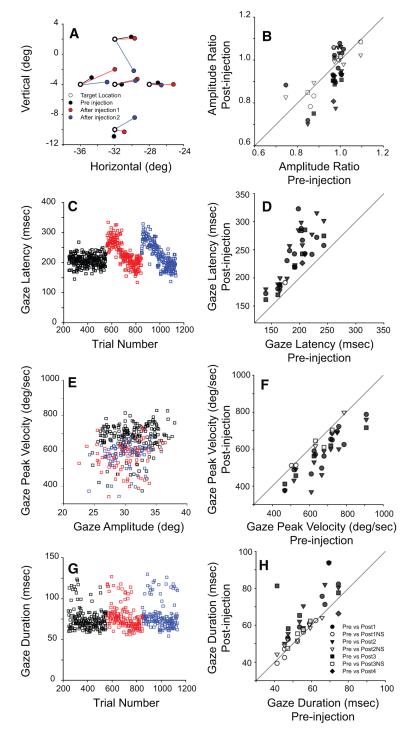FIG. 4.
Effects of reversible inactivation on gaze shifts. Left: example data from 2 injections from monkey WL. The same 2 injections are shown in all panels in the left column. Control data are shown in black; data from the 1st and 2nd injection on this track are shown in red and blue, respectively. Right: summary data. Each individual data point compares postinjection values of the parameter of interest with the associated control values. Circles, triangles, squares, and diamonds show data from the 1st, and, if available, 2nd, 3rd, and 4th injections of each track. Filled symbols indicate that significant changes occurred for the postinjection data. A and B: gaze amplitude; C and D: gaze latency; E and F: peak gaze velocity; G and H: gaze duration. Reversible inactivation of SC clearly impaired monkeys’ ability to perform head-unrestrained gaze shifts, as indicated by decreased amplitude, longer reaction times, decreased peak velocity, and longer durations. See text for more details.

